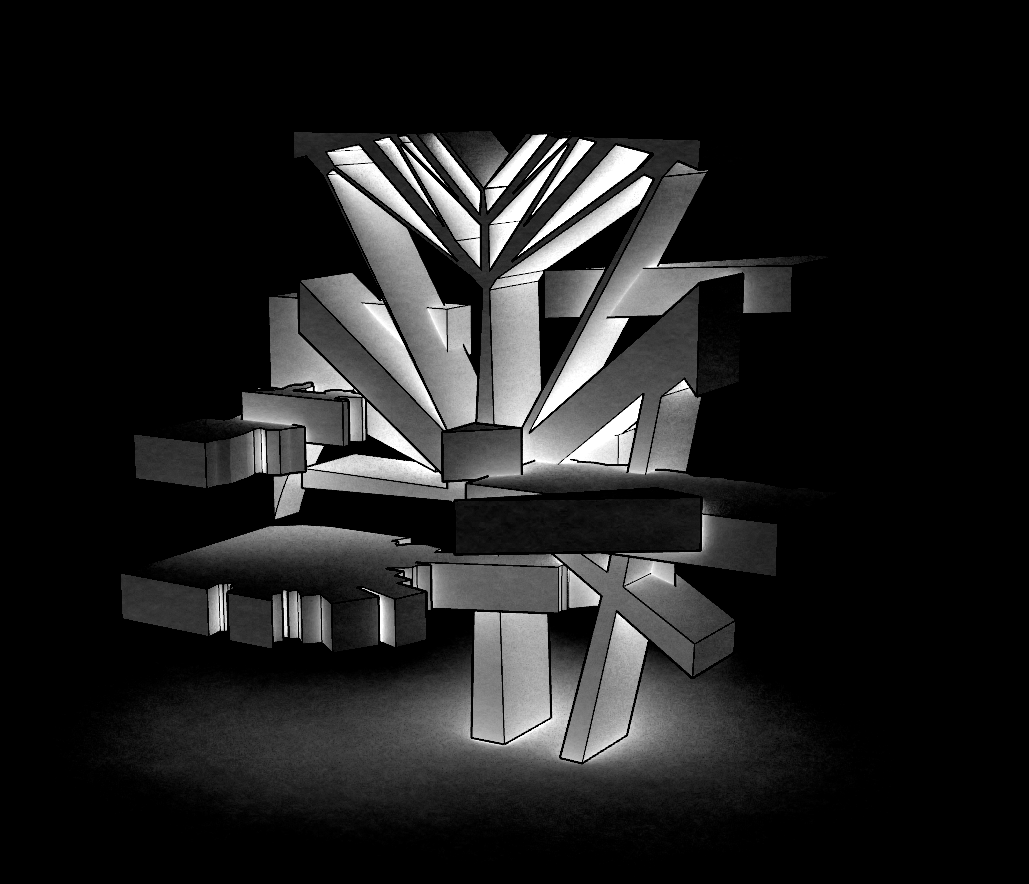
Sustainable Showroom
405 E 59th St, New York, NY 10022
BFA Senior Studio 6
Stability Amidst Uncertainty
Sustainable Material
Looking back across human history, we stand at an unprecedented moment – never before have we been simultaneously so powerful yet so vulnerable. The global pandemic has forced us to fundamentally rethink our lives, reminding us that change is life's only constant. While COVID-19 has transformed our priorities and daily routines, we still cling to the belief that we can maintain some control and stability in this ever-shifting world.
Though we lack direct evidence linking climate change to COVID-19's spread, we understand that climate change is altering the fundamental relationships between humans and other species on Earth – a crucial factor in our health and infection risks.
As global temperatures rise, animals migrate toward the poles seeking cooler habitats. This movement creates unprecedented contact between previously separated species, opening new pathways for pathogens to find novel hosts. Many factors driving climate change also increase epidemic risks. Deforestation, primarily for agriculture, leads the way in global habitat loss. As animals lose their homes, they're forced to migrate, increasing contact with other species and humans – creating perfect conditions for bacterial exchange.
Given that humans spend 90% of our time in interior spaces, our role as designers becomes crucial. We carry the responsibility to address climate change while creating environments that offer stability amid uncertainty. Our work bridges chaos and comfort, making us not just designers, but stewards of human wellbeing.
Architecture transcends mere practicality – it's a statement of values and beliefs. Yet the building sector devours nearly 40 percent of America's energy production while generating an equivalent share of greenhouse gas emissions. Since materials form the foundation of any space, I propose creating a venue dedicated to promoting and selling sustainable building materials. These materials can help reduce environmental damage and advance sustainability goals.
However, limited public understanding of sustainable building materials, combined with capitalist pressures, creates significant barriers. The current system's endless drive for growth and profit leads to substantial ecological damage. The prospect of truly sustainable solutions threatens existing power structures – those at the top prefer maintaining traditional resource use patterns and established rules. But this approach is fundamentally flawed. Human progress demands innovation, and our survival depends on finding ways to coexist with nature rather than depleting Earth's resources. This balance offers the best path forward for both environmental preservation and human civilization's longevity.
Sustainable, eco-friendly materials do more than protect the environment – they forge connections between people and nature, benefiting both humans and other species physically and psychologically. Yet challenges persist: immature environmental technologies result in longer manufacturing times and higher costs, making widespread adoption difficult. Still, there's hope. The sustainable materials industry brings fresh innovation while respecting traditional architectural methods. With rising environmental awareness among consumers and employees, increasing sustainability investments, and strengthening government regulations, we're witnessing a crucial shift toward a more sustainable future in construction.
Proposal
The perception of sustainable design and materials often centers on high costs and limited availability. Both designers and customers frequently hesitate to embrace sustainable options. This resistance stems from public misconceptions about sustainable construction, concerns over higher costs, and preconceptions about sustainable aesthetics. Designers often default to familiar vendors rather than exploring new sustainable options or conducting deeper research. Additionally, sustainable materials are frequently viewed as having limited color palettes and form factors, placing them outside the comfort zone of both designers and the public.
My vision is to challenge these prejudices and redefine the image of sustainable materials, demonstrating their variety and affordability. The showroom and installation space will serve as a foundation for improving public understanding and acceptance of environmentally friendly materials. Through this platform, we can encourage designers to collaborate with vendors in developing sustainable alternatives that align with their established material expectations.
The project aims to highlight the diversity of sustainable materials while exploring their aesthetic boundaries. Central to this exploration is finding the optimal balance between aesthetic appeal and sustainable features, proving that these elements can coexist harmoniously in contemporary design.






Floor Plans & Lighting Design
Sections
Renders
Physical Model

























